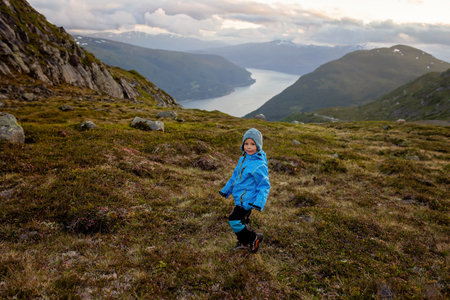The Spirit of Adventure: Why Outdoor Exploration Matters
There’s something quintessentially British about lacing up your wellies, grabbing a map, and heading off into the countryside. In today’s digital age, encouraging youngsters to explore the Great British outdoors is more important than ever. Orienteering and treasure hunts are classic activities that not only get children moving but also ignite their sense of adventure and curiosity. These hands-on experiences teach invaluable life skills—independence, resilience, and problem-solving—that are difficult to cultivate indoors or through screens. Rooted in Britain’s rich tradition of rambling, exploring woodlands, and discovering hidden gems from the Lake District to the South Downs, these activities help youngsters connect with their natural heritage. By learning to navigate using a compass or following a series of clever clues, children become more self-reliant and confident. They discover that getting lost isn’t something to fear, but rather an opportunity to learn and grow. Ultimately, nurturing this spirit of exploration prepares them for life’s bigger adventures, all while making lasting memories in some of Britain’s most beautiful landscapes.
2. Getting Started: Essentials for British Orienteering and Treasure Hunts
If you’re keen to introduce young adventurers to the joys of orienteering and treasure hunts in the Great British outdoors, proper preparation is absolutely vital. The UK’s landscapes are gloriously diverse—from rolling Cotswolds hills to rugged Scottish moorlands—and the weather can change in the blink of an eye. Here’s a practical guide to help you get started with confidence and keep everyone comfortable, safe, and smiling.
Key Kit Checklist
| Item | Why It Matters | British Tips |
|---|---|---|
| Map & Compass | Essential for navigation; GPS isn’t always reliable in remote spots. | Choose local Ordnance Survey maps; teach map-reading basics. |
| Waterproofs | Weather turns quickly—staying dry is key for morale. | Packed macs or lightweight rain jackets are ideal year-round. |
| Sturdy Footwear | Muddy paths, slippery rocks, and stiles abound. | Opt for walking boots or wellies depending on terrain. |
| Snacks & Water | Keeps energy up during long rambles. | Packed lunch with classic sarnies and flapjacks never goes amiss. |
| First Aid Kit | Treat minor scrapes or insect bites promptly. | Add plasters, antiseptic wipes, and allergy tablets just in case. |
| Whistle & Torch | For safety in low visibility or emergencies. | A headtorch frees hands for map reading after dusk. |
| Sunscreen & Hat | The British sun can still burn—especially in open fields. | Don’t forget lip balm with SPF! |
| Pencil & Notepad | For jotting clues or marking waypoints on treasure hunts. | Keep them in a sealable bag to stay dry. |
Dressing Right for British Weather
The British climate is famously unpredictable. Layering is your best bet: start with a moisture-wicking base layer, add a warm fleece or jumper, and top it off with a waterproof jacket. In colder months, gloves and woolly hats are a must. For little ones, pack a spare set of clothes—they’ll find every puddle without fail!
Navigating Varied Terrain Safely
- Moorland: Stick to marked trails; fog can roll in fast making navigation tricky.
- Woodlands: Watch for roots and uneven ground. Keep an eye out for nettles!
- Lakes & Streams: Supervise children near water at all times; stones may be slippery.
- Hills & Cliffs: Always check weather forecasts before heading out. Wind speeds increase dramatically on exposed ridges.
Top Safety Tips for Young Explorers (and their Adults)
- Always let someone know your planned route and expected return time.
- Countryside Code: Respect wildlife, close gates behind you, and leave no litter.
- Packed mobile phones—but remember rural signal isn’t guaranteed everywhere.
- If lost: Stop, stay put, use your whistle (six blasts means ‘help’), and wait for assistance.
- Regular headcounts—especially if excitement leads kids to dash ahead!
With these essentials sorted, you’ll be well-prepared for unforgettable adventures across Britain’s wild places—rain or shine!

3. Mapping the Journey: Classic Orienteering in the UK
When it comes to nurturing young explorers, nothing quite beats the thrill of orienteering across Britain’s varied landscapes. From dense woodlands and windswept moorlands to sprawling historic parks, classic orienteering spots offer a real taste of adventure and self-reliance. In the UK, this outdoor pursuit is steeped in tradition and provides a hands-on way for kids and families to develop navigation skills while soaking up the best of British nature.
Finding Your Perfect Orienteering Spot
The first step is choosing your terrain. For beginners and younger children, local parks—often with purpose-built orienteering courses—are ideal for dipping your toes in. As confidence grows, classic sites like Epping Forest in Essex, Cannock Chase in Staffordshire, or the ancient woodland of Sherwood Forest provide more challenging routes with a true sense of wildness. If you’re after open vistas, Britain’s famous moorlands such as Dartmoor or the Yorkshire Dales present an entirely different test, where the landscape opens up and navigation becomes key.
Mastering Map and Compass Skills
Every great British orienteer swears by their trusty OS (Ordnance Survey) map—a national institution when it comes to outdoor adventures. Learning to read contour lines, identify landmarks, and plot bearings on these detailed maps is not just practical but genuinely empowering for children. Pair this with a reliable Silva compass and suddenly you’re ready to tackle even the most intricate courses. Many clubs and country parks offer family-friendly workshops where both parents and kids can hone these vital skills together.
Real-World Tips from the Trail
In practice, navigating a course isn’t always straightforward—expect muddy boots, brambles, and the odd sheep! The secret is to encourage youngsters to plan their route before setting off, using their map to pinpoint key checkpoints and safe crossing points. Don’t forget to factor in weather conditions—a sudden downpour can make paths slippery, so waterproofs are a must. Most importantly, keep it fun: pack a picnic, bring plenty of snacks, and celebrate small victories along the way. With each outing in Britain’s great outdoors, young adventurers will build confidence, resilience, and an unbreakable bond with the landscape around them.
4. Treasure Hunts with a British Twist
Injecting a dose of British flair into your treasure hunts can transform a simple activity into an immersive adventure steeped in local culture and history. By weaving in references to beloved British stories, famous historical events, and quintessential traditions, you’ll spark curiosity and help young adventurers connect with their surroundings in meaningful ways.
Creative Ideas Inspired by British Stories and Legends
Why not base your hunt around classic tales like Robin Hood or Sherlock Holmes? For example, children could search for “hidden arrows” in Sherwood Forest-inspired woodlands, or follow cryptic clues through London’s parks à la the great detective. You could even use Harry Potter as inspiration, sending young witches and wizards on a quest for magical artefacts tucked away in castle grounds or village greens.
Incorporating Local History and Traditions
Bring history alive by setting treasure hunts at locations rich in heritage—think ancient ruins, market towns, or even the iconic village green. Craft clues that reference famous Britons, royal landmarks, or traditional customs like maypole dancing and afternoon tea. Not only does this make the activity more engaging, but it also fosters pride in local identity and encourages learning outside the classroom.
Table: British-Themed Treasure Hunt Inspiration
| Theme | Location | Cultural Reference | Clue Example |
|---|---|---|---|
| Sherlock Holmes Mystery | London Park | Sherlock Holmes statue, Baker Street | “Seek the hound where fog rolls in near the great detectives home.” |
| Robin Hood’s Quest | Woodland Area | Sherwood Forest legend | “Find where outlaws hide beneath the ancient oak.” |
| The Royal Hunt | Castle Grounds | The Crown Jewels, monarchy traditions | “Follow the crown’s path to jewels hidden under watchful stone lions.” |
| Pirate Adventure | Seaside Town or Beach | Bristol pirates, maritime history | “Search for buried gold where seagulls cry above salt-soaked stones.” |
| Harry Potter Magical Quest | Historic Village or Schoolyard | Hogwarts-inspired activities | “Collect wizard’s ingredients where four houses dwell together.” |
Tips for Adding a Distinctly British Flavour
- Select Iconic Locations: Use settings like village greens, ancient pubs (for adults supervising), historic castles, or scenic countryside trails familiar from British literature.
- Add Local Lingo: Incorporate regional slang or rhymes—like “fancy a cuppa?” or “off to the loo”—into your clues for extra authenticity.
- Reference Seasonal Events: Tie your hunt to events such as Guy Fawkes Night, May Day celebrations, or a summer fete for added relevance and excitement.
- Celebrate Traditions: Include nods to afternoon tea (maybe a clue hidden under a teapot!) or morris dancing to create memorable moments rooted in tradition.
- Memento Rewards: End the hunt with a prize of classic British treats—think chocolate biscuits, jelly babies, or even a mini Union Jack flag.
Treasure hunts with a uniquely British twist don’t just entertain—they offer hands-on lessons about local culture and heritage. By blending storytelling with exploration, you’ll nurture confident young adventurers who appreciate both the magic of discovery and the richness of Britain’s past.
5. Teamwork, Challenge & Skills: What Youngsters Really Learn
Orienteering and treasure hunts are more than just outdoor pastimes; they’re a practical classroom without walls, where British youngsters pick up invaluable life skills. Working together to crack clues or navigate woodland trails, children quickly realise that teamwork isn’t just about sharing tasks—it’s about pooling strengths, communicating clearly, and supporting mates when the going gets tough. These adventures demand problem-solving on the spot: deciphering maps, interpreting compass bearings, or figuring out cryptic riddles typical of a classic British treasure hunt. Every misstep is a lesson in resilience and creative thinking.
Learning Local Geography First-hand
Navigating through local parks, forests, or even the rugged moors connects children directly with Britain’s varied landscape. Orienteering maps introduce them to contours, grid references, and landmarks—skills that bring geography lessons to life. Whether it’s identifying ancient hedgerows or spotting historical ruins, young adventurers gain a sense of place and pride in their surroundings that goes far beyond what’s taught in classrooms.
Boosting Environmental Awareness
By spending time outdoors, kids naturally develop an appreciation for nature. Orienteering courses often highlight local wildlife habitats or conservation areas, encouraging respect for the countryside code. Picking up litter during a hunt or learning why we stick to footpaths helps foster responsibility and awareness of our impact on the environment—a value deeply rooted in British outdoor culture.
Practical Skills for Everyday Life
The confidence gained from finding a hidden cache or completing a challenging route is real and lasting. Reading a map or using a compass might seem old-fashioned in today’s digital world, but these hands-on skills equip youngsters with independence and self-reliance. It’s not just about winning—it’s about learning how to tackle challenges head-on, adapt to unexpected situations, and work as part of a team. That’s the heart of building young adventurers across Great Britain.
6. Top Spots and Resources for Families Across Britain
If you’re eager to spark your children’s sense of adventure, the UK is packed with fantastic locations and resources to get started with orienteering and treasure hunts. Here are some handpicked recommendations—whether you’re after wild moorland, leafy commons, or a dash of history, there’s something for every family.
Best Places to Begin Your Outdoor Adventures
National Parks
The Lake District, Peak District, and New Forest are teeming with waymarked trails, family-friendly orienteering routes, and breathtaking scenery. The Forestry England sites in these areas often have permanent orienteering courses and regular events open to all ages.
Local Commons and Woodland Trust Sites
Many local commons like Wimbledon Common or Epping Forest host regular treasure hunts and mapped orienteering routes—perfect for first-timers. The Woodland Trust also provides downloadable maps and activity sheets for families keen to explore woods closer to home.
Historic Sites
English Heritage and National Trust properties aren’t just about stately homes—many offer themed treasure hunts or digital scavenger trails blending history with exploration. Try Tintagel Castle in Cornwall or Hadrian’s Wall for a unique twist on your adventure.
Useful British Resources and Organisations
Orienteering Apps & Tools
MapRun6: This free app lets you access virtual orienteering courses across the UK—no special equipment needed, just your smartphone.
Geocaching: Popular across Britain, this global game turns your walks into real-life treasure hunts using GPS coordinates. Great for getting kids excited about maps!
Organisations and Clubs
British Orienteering Federation: Their website lists local clubs, events, and beginner guides tailored for families.
The National Trust & Forestry England: Both organisations regularly run family-friendly navigation days and seasonal treasure hunt events—check their online event calendars.
Final Tips for Family Adventurers
Many parks and historic sites offer starter packs or printable activity sheets at visitor centres. Don’t forget to bring snacks, waterproofs (it’s the UK after all!), and a sense of curiosity—there’s always another path to discover around the corner. Whether you’re uncovering hidden clues in Sherwood Forest or plotting a route through your local park, Britain’s great outdoors is waiting for your next family adventure.


